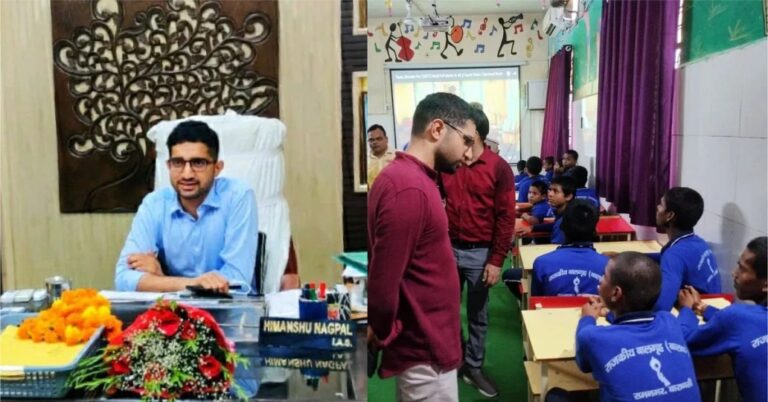![]()
In 2019, an ordinary day turned into a nightmare for 12-year-old Shoaib Ahmed, who has an intellectual disability. Instead of heading to work at a local barber shop in his village in UP’s Shamli district, he accidentally ended up on a bus that took him far away to Varanasi, around 1,000 km from home. Unable to find his way back, he survived by begging at the railway station while his worried family searched for him.
His family’s frantic search and efforts to locate him included registering missing person reports at various police stations and traveling long distances to find him. The situation seemed bleak, with fears about his safety and well-being.
However, after four years of separation, a call from the local police station brought hope and joy to Shoaib’s family. He had been found, and a tearful video call reconnected them. In January of the current year, Shoaib was finally back home.
Shoaib’s story is not unique in Varanasi, where 730 lost children have been reunited with their families since the previous July. This positive outcome was achieved through the efforts of Mission Muskaan, overseen by Himanshu Nagpal, an IAS officer.
Hailing from Haryana, Himanshu Nagpal, a 2019-batch IAS officer, took the initiative to address the issue of lost and begging children in Varanasi. While working as the Chief Development Officer (CDO) in Varanasi, he encountered children begging on the streets during a field visit. These children were not from the city but were lost or abandoned, resorting to begging for survival.
Recognizing the gravity of the situation, Himanshu Nagpal organized a coordinated effort involving various departments such as Child Development, Social Welfare, Anti-Human Trafficking, and the police. His goal was to identify and rescue these children from places like railway and bus stations, temples, ghats, flyovers, and circles.
Children between the ages of 5 and 18, often from different districts and even neighboring states or countries, were sheltered in child welfare homes. Himanshu Nagpal’s teams, including psychologists, worked to gather information about these children, often complicated by intellectual disabilities. Once information was obtained, pictures of the children were shared in local police stations, leading to their eventual reunification with their families.
For families unable to travel to Varanasi due to financial constraints, department officials accompanied the children to their homes. A record of the joyful reunions was maintained through photographs. The effort didn’t end with the reunions; continuous follow-ups were conducted to ensure the well-being of the children.
During the period of separation from their families, the children were housed in well-equipped child welfare shelters, complete with improved facilities, air conditioning, and educational resources. Himanshu Nagpal collaborated with primary school teachers and non-profit organizations to provide basic education to these children.
Despite challenges such as varying timeframes for reunification and communication barriers posed by intellectual disabilities, Himanshu Nagpal remained dedicated to the cause. He emphasized the importance of continuous effort, as tracking and reuniting children required coordination with other districts and active police stations.
Himanshu Nagpal viewed this mission as an integral part of his duty, ensuring that these children were rightfully reunited with their families. For him and his team, witnessing the happiness of families reuniting was a rewarding outcome that justified their commitment to this cause.
Reference:







